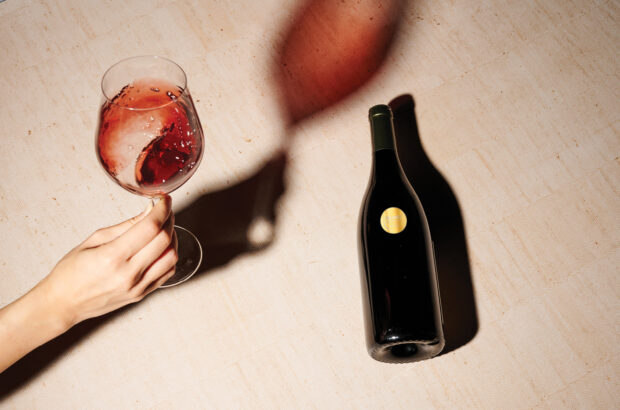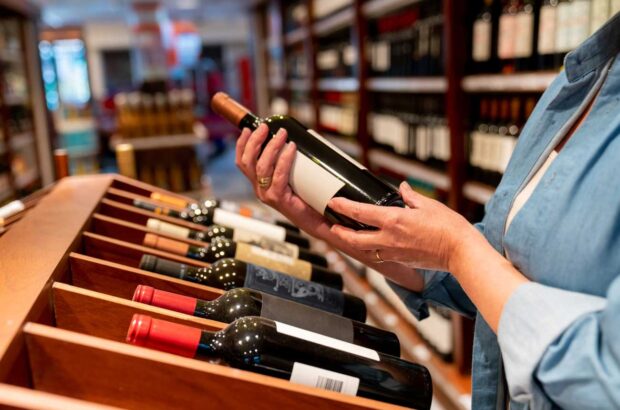Vintage Port
The pinnacle of the Port pyramid: many shippers have built (and occasionally destroyed) their international reputation on the back of vintage Port. The skill in making a great vintage Port comes from the painstaking selection of small lotes (parcels) of wine from the very finest locations made from grapes picked at optimum ripeness after an outstanding growing season. These grapes need to be very well worked during vinification, either foot trodden in stone lagares or increasingly subject to careful piston extraction or robotic treading. Graham’s 2000 was the first classic vintage Port to be partially made by robotic feet.
After the harvest these wines are monitored for a potential vintage. The decision to ‘declare’ a vintage is made independently by the shipper and it is not one that is taken lightly. There is no law about the regularity of Port vintages but there are usually three or four a decade. Over the past decade 2011, 2007 and 2003 were fully declared by nearly all shippers.
Quantities are limited and a major shipper may declare between 8,000 and 15,000 cases depending on the year and circumstances. Sometimes the quantity declared is much less. In 1994, Quinta do Noval (anxious to improve its standing) declared 1,000 cases and in 2009 Warre’s declared just 500 cases of outstandingly powerful wine.
Read: Port 2015 A buyer’s guide
There is also a recent trend towards declaring a super-lagar (often alongside a classic declaration) from a site-specific plot in a particular vineyard. Quinta do Noval Nacional, from a tiny plot of ungrafted vines, is the historic prototype for a sub-category of wines which now include Taylor’s Quinta de Vargellas Vinha Velha, Graham’s Stone Terraces and Quinta de la Rosa’s Vale do Inferno. The total quantity declared of each wine is usually no more than 250 cases, and prices are commensurate. These are the ultimate collector’s wines!
Before a Port can be bottled as a vintage it must be submitted to the IVDP (Port and Douro Wine Institute) for approval, anytime between 1 January and 30 September in the second year after the harvest. Once the wine has been bottled it continues to evolve slowly over a period of at least 15 to 20 years before it is considered ready to drink. Rather like the seven ages of man, vintage Port enjoys a short, fragrant bloom of youth before it shuts down and goes through 10 to 20 years of surly adolescence. Then it slowly emerges as an adult gaining in gravitas until it reaches its peak, often between 20 and 40 years of age. For the finest wines the peak becomes a long plateau and old age may not be reached for 80 years or more. Anyone born in one of the great post-war vintages of 1945, 1955, 1963, 1966 and 1970 has a wine to accompany them for life!
Since the early 2000s, a dramatic improvement in the quality of the fortifying spirit (which, it is easy to forget, makes up 20% of the wine) may well have changed the flavour profile of vintage Port. The spirit being used to fortify vintage and single-quinta vintage Port has a much more vinous character than in the past.
This means that it interferes much less with the fruit in a young wine than the coarse, rather oily spirit of yesteryear. Certainly recent declared vintages like 2007 and 2011 are notable for the purity and clear expression of fruit, even at this early stage. David Guimaraens, head winemaker for The Fladgate Partnership, maintains that the transition from youth to maturity will be much smoother in future, with less of that awkward adolescent stage. This should make vintage Port easier to broach at an earlier stage but the best wines should still age for a lifetime.
Single-Quinta Vintage
With huge improvements in winemaking from the 1980s onwards, the production of a good vintage Port is much less of a hit-and-miss affair. Unless the year is a total washout (eg 1993 and 2002), wines of potential vintage quality can be made every year. Consequently wines from good years (in between declared vintages) are bottled by the major shippers as single-quinta vintage Port (SQVP). The same rules apply as to vintage Ports, the only difference being that the wines come from a single quinta or estate with the recommendation that they may be drunk earlier, after 10 rather than 20 years.
Without the collector’s cachet of a vintage Port, these wines are excellent value and by building up a vertical collection you can follow a specific Douro terroir. A handful of independent quintas are now producing their own SQVP nearly every year, along the lines of a Bordeaux château. Though this is a relatively new category, look out for properties that already have a good track record: Quinta do Vesúvio, Quinta de la Rosa, Quinta do Roriz, Quinta do Passadouro and Quinta do Vale Meão.
Late Bottled Vintage (LBV)
Late-Bottled Vintage means just what it says on the label: wine from a single year bottled between four and six years after the vintage. Produced in much larger volumes than either classic vintage or SQVP, two different styles of LBV Port have emerged.
The modern style of LBV was founded by Taylor’s in the mid-1960s and quickly became a commercial success. These wines are aged in large vats and are subject to fining and filtration prior to bottling. This prevents the formation of a crust or sediment in bottle, thereby removing the need to decant. During the 1990s there was a counter-trend towards so-called ‘traditional’ or unfiltered LBV: wines aged in the same way but bottled without any filtration. Unfiltered wines are more structured and full bodied than LBVs that have been treated, and have the capacity to age for five to 10 years in bottle. They are bottled with a driven cork (as opposed to the stopper cork for LBVs bottled for immediate drinking).
Since 2002, an LBV may also be sold as ‘bottle matured’. These wines must have been aged in bottle for a minimum of three years before their release. Warre’s and Smith Woodhouse have made a specialty of this style and the wines share something of the depth and character and maturity of a true vintage Port at a fraction of the price.
Go back to the Port guide:

Know your Port styles – The Decanter guide
Learn about Port with top bottles to try







